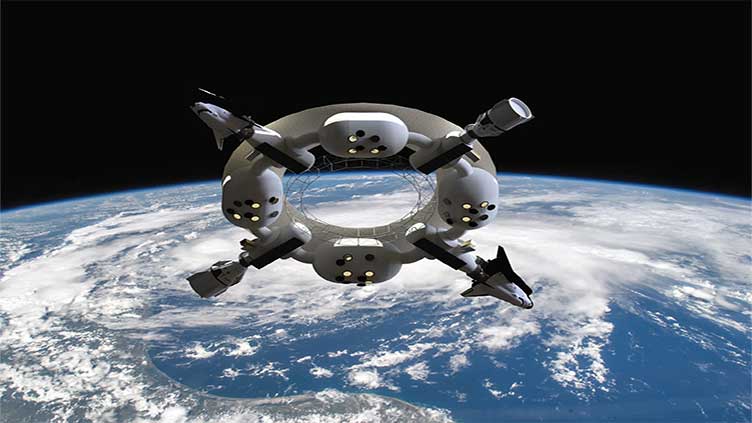A hotel in space could be operational in just five years

Technology
It depends on cost, ability to acclimate to a space environment
(Web Desk) - If the idea of a hotel in space sounds enticing, you may not have to wait longer than five years.
Space Development, a company that specialises in designing and constructing space stations, says it could have luxury accommodation in space within ‘60 months’ of securing enough funding for the projects.
With two space hotels in the works—Voyager Station and a more recently announced Pioneer Station—anyone’s next R&R could take place among the stars.
Voyager Station, Above’s first proposed space hotel, was originally designed to accommodate 280 guests, though new plans have updated that number to 400.
Last year, the company shared designs for a smaller station called Pioneer Station, which would house significantly less people—only 28 at a time—but could be operational sooner than Voyager.
It depends on cost and also the ability to acclimate to a space environment.
To understand how the space stations work, consider a simple demonstration: water spinning in an upside bucket. If the force of a rotating bucket is greater than the force of gravity trying to pull the water out, the liquid in the container stays put. It might seem like magic, but it’s science.
The artificial gravity of both the Voyager and Pioneer stations works incredibly similar to this.
“The station rotates, pushing the contents of the station out to the perimeter of the station, much in the way that you can spin a bucket of water—the water pushes out into the bucket and stays in place,”
Because of the physics involved, they look in many ways like giant floating wheels.
On Voyager Station, the docking hub in the middle of the station will welcome ships and also serve as the operation and control center.
Elevators in spoke-like shafts then transport guests and employees to the main hospitality area, which encircles the structure in the way a tire does a wheel.
“Artificial gravity functionality informs the overall layout of the station and the engineering of the structural members,” the company CEO Alatorre tells AD.
“As we are generating artificial gravity through rotation, this introduces new structural scenarios that are unique to the space environment.”
Though simulated gravity is important for long-term space habitats, for many visitors who venture so far, feeling the weightlessness of space is a big part of the appeal.
As such, the company has plans to ensure this experience isn’t missed. “The interiors of Pioneer station, in particular, are designed to function in both zero gravity and partial gravity,” Alatorre explains.


